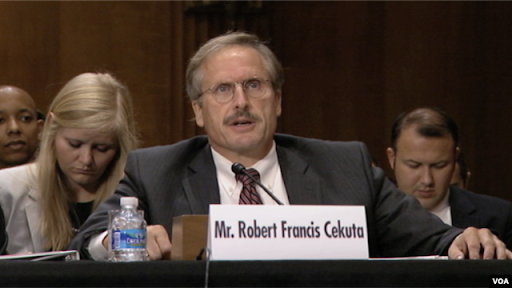
Stars and Stripes (US): The South Caucasus: A chance for America to prove it’s back
25 November 2021
By: Robert F. Cekuta
Stars and Stripes , 24.11.2021:
One year ago, the war between Armenia and Azerbaijan ended with a cease-fire brokered by Russian President Vladimir Putin. In Azerbaijan’s capital, Baku, on the one-year anniversary I saw Azerbaijanis celebrating, waving flags, blowing car horns along the boulevard that runs along the Caspian.
But this is not peace. Days after the anniversary, the smoldering border burst into flames once more with multiple casualties. And, once more, it was Moscow that brokered yet another cease-fire. Putin’s administration thrives on the leverage instability brings and uses it to show it can and does call the shots in the region. The Kremlin has every interest in prolonging a situation that gives Russia a pretext for continued military occupation and political manipulation. Russian forces are on the ground in number as “peacekeepers.” That they have consistently allowed the conflict to linger and flare up tells its own story.
Left in Moscow’s hands, all we can expect is more conflict.
In recent weeks, there has been a quiet uptick in U.S. engagement in the South Caucasus. The operative word is “quiet.” While Washington has sent a senior official out to the region and talked to Armenian and Azerbaijani leaders bilaterally and through the Minsk Group, the general perception unfortunately remains that the United States is absent. Like it or not, perception is once again trumping reality, both in Armenia and Azerbaijan and beyond.
The U.S. remains the only international player with the diplomatic wherewithal and weight required to bring the parties together and drive for a sustainable peace. The window of opportunity is right now, while the electoral cycle and other factors allow the machinery of the U.S. government to focus. Washington can, and should, act.
The fact that U.S. intervention is both possible and necessary doesn’t mean it’s going to be easy. Armenians are angry and feel the sting of unexpected military reversals. They worry about the future, about their security. Azerbaijan, for its part, has stated its desire for a peace agreement and to open talks. Turkey has repeatedly made clear its willingness to establish normal diplomatic and commercial ties with Armenia. This is not enough.
Much of the task rests with Armenia and Azerbaijan. It is imperative Armenians and Azerbaijanis start to look not just at their histories and the record of the past decades, but at how they can find a way forward and build a future where the two neighbors can live peacefully. It is likewise essential that each live up to the terms of the 2020 cease-fire and build on its spirit as well as its letter.
One positive development coming out of that agreement has been the discussions they have had, along with Russia, on establishing transportation links. Armenia now allows Azerbaijani civilian airplanes to overfly its territory on their way between Baku and the Nakhchivan exclave. This step shows progress is possible. A planned land link across Armenia between Nakhchivan and the western parts of Azerbaijan would further facilitate transportation across the whole of Eurasia, helping create a broader network that would facilitate transport between Europe and East, Central and South Asia. With that improved connectivity will come increased economic activity and greater prosperity for all.
But there is much hard work both must do. A critical need in both countries is to soften the rhetoric, to reduce the animosities that have built up during the decades of conflict, and to prepare their populations for the steps needed for real and lasting peace.
The United States has long experience in helping countries overcome hatred and has the resources needed to do so. America’s presence is deeply desired in the region and after a long period when it seemed the U.S. government was disengaged, there have been signs Washington looks to engage more actively and effectively in the region, bilaterally as well as through international fora to help Armenia and Azerbaijan move forward. Both countries should take advantage of this window, meeting with U.S. government officials, being clear in how they see the United States — its governments, its institutions, its private sector — acting to help build understanding, infrastructure, and stronger links between the South Caucasus and other parts of the world.
One final point: Unlike other international efforts, the situation in the South Caucasus is not one that requires huge monetary outlays or the deployment of troops. What it requires is attention, effort and persistence, certainly from Armenia’s and Azerbaijan’s governments and societies, and also from the United States and others interested in peace, security, prosperity and freedom in Europe. Visible, focused efforts by the United States now in the region can produce success and restore faith in American leadership, vision and engagement. The South Caucasus provides an excellent opportunity to verify that America is indeed back.
Robert F. Cekuta is a member of the advisory board of the Caspian Policy Center, a nonprofit research think tank based in Washington. He was U.S. ambassador to Azerbaijan from 2015 to 2018, and previously U.S. principal deputy assistant secretary for energy resources, as well as deputy assistant secretary for energy, sanctions, and commodities.












